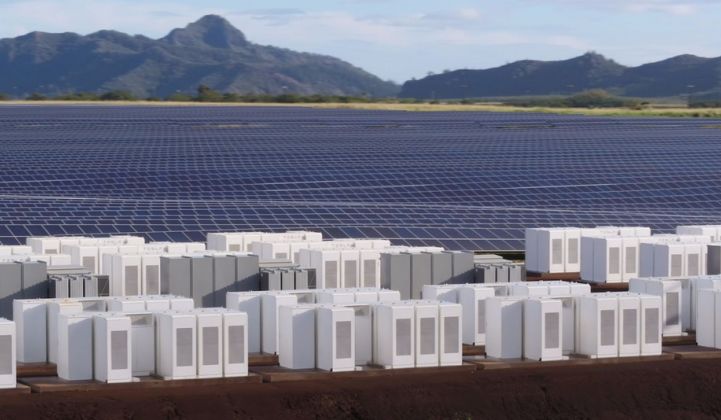The U.S. energy storage industry capped off its biggest year of installations with its largest single quarter in Q4.
U.S. energy storage installation topped 522.7 megawatts/1,113 megawatt-hours in 2019 as a whole and 186.4 megawatts/364.2 megawatt-hours in the fourth quarter, according to the newly released Energy Storage Monitor 2019 Year in Review, produced by Wood Mackenzie and the Energy Storage Association.
For years, those in the industry have argued that the ability to store and release electricity nearly instantaneously offers great operational benefits, not just for the adoption of intermittent renewables but also for more efficient grid operations.
The latest numbers suggest that this argument is starting to resonate as utilities across the nation contract for large battery plants and an unprecedented number of homeowners seek solar-battery combinations to keep the lights on in an outage.
Indeed, the home battery sector delivered the most striking growth, the Energy Storage Monitor reported. Fourth-quarter residential installations doubled year-over-year to 40.4 megawatts/90.3 megawatt-hours, marking its third consecutive record-setting quarter.
Analysts believe that this momentum is unlikely to slow, due to several factors.
"This is no blip," said WoodMac storage analyst Brett Simon, an author of the report. "Residential growth will only intensify in 2020."
California wildfires, blackouts and policy responses drive residential storage
One key driver is the decision by California regulators early this year to open up several hundred million dollars of funding for batteries serving resilience in wildfire-threatened parts of the state. California customers have grappled with outages both from wildfires threatening the grid and from preemptive utility power shutoffs intended to avoid sparking new fires.
The funding allocation for resilience installations creates an estimated 390 megawatt-hours of upside for California’s residential battery installers while pushing down the forecast for commercial installations that otherwise may have received that funding.
WoodMac estimates that one in four home solar installations in California this year will include storage. In Hawaii, some solar installers already report storage attachment rates of 90 percent to 100 percent, Simon noted.
At the same time, a wave of new entrants in the residential market is likely to put downward pressure on pricing. After several years of having the market more or less to themselves, Tesla, LG Chem and sonnen face new competition from companies including home generator incumbent Generac, microinverter manufacturer Enphase and solar panel suppliers Panasonic and SunPower.
California retained its dominant position in overall capacity installed for the year, largely due to its insurmountable lead in the residential and commercial segments. But the front-of-the-meter rankings reflected a diversifying pool of states building big batteries.
Massachusetts, Hawaii and New York took first, second and third place for megawatt-hour capacity installed in front of the meter last year, with 75, 70 and 69 megawatt-hours, respectively. Hawaii has embarked on a transition to entirely renewable power, which led to the construction of a series of large-scale solar-plus-storage plants. Massachusetts and New York enacted a suite of policies to incubate local storage industries as part of their overarching clean energy strategies.
Storage in multiple states
The storage industry has made headway in geographic expansion beyond the initial strongholds of the PJM wholesale market and California.
"Storage is being deployed all across the country now, at megawatt-scale, in more than half of U.S. states," said Kelly Speakes-Backman, CEO of the Energy Storage Association.
Eight states now contain utility-scale storage facilities adding up to more than 50 megawatts. Another 11 states operate more than 10 megawatts each. Only 15 states have yet to adopt any advanced storage in front of the meter, according to WoodMac’s data.
Overall, U.S. storage installations are expected to nearly triple in 2020 and more than double in 2021. Residential numbers, in particular, will triple this year compared to last year.
This year could also be the first in which the annual storage market surpasses $1 billion. In 2019, storage investments totaled $712 million; this year, they are poised to jump to just shy of $2 billion.
But the industry still faces headwinds, Speakes-Backman noted. Tariffs on battery imports from China affect supply, and the impacts of the coronavirus and COVID-19 on the battery manufacturing chain are still being determined. Back in the U.S., regulatory uncertainty around wholesale market opportunities for storage may be holding back investment.
One way to keep the industry pushing forward amid these obstacles, Speakes-Backman said, is to pass a standalone storage tax credit, which has thus far been left out of federal energy policy.
***
The executive summary of the Energy Storage Monitor details the growth of the energy storage market in Q4 2019. Access it here.




